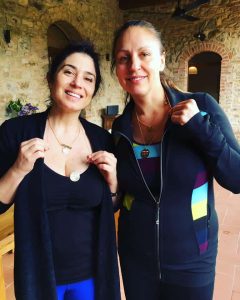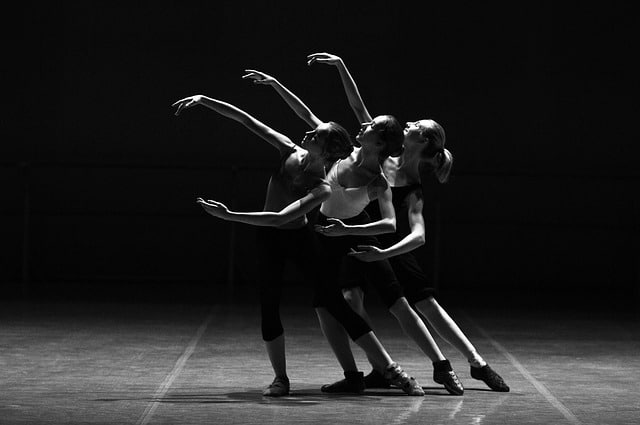Plastic and expressionless, they lay in a pile, haphazardly tossed in with the fluffy pink elephant, the snow white Dalmatian with dark black spots, and the bright orange snake with the long red tongue named after my uncle Don. Of my treasured dolls, my favorite was Chickenhead. Her indelicate name came from my grandfather, who had aptly described her ratty coarse brown stand-up hair, the product of months and months of being grasped in a tiny hand and dragged along to every engagement that could ever be considered important in a 6-year-old’s life.
Chickenhead lived with the rest of my dolls and stuffed animals in a tall cardboard box tucked in the corner of a closet in the master bedroom that spanned the front of the house; my parents’ bed was in the center of the room, and I slept at the foot, in a kid-sized bed, complete with railings so I wouldn’t fall out. I’d sometimes crawl in the closet during the day, or late at night when I couldn’t sleep. With the door closed, it was dark as night and it was so quiet it would almost shut out the tense but hushed quarrels from the living room. It was child-small, but comfortably cozy, filled with that woody smell that comes with old houses and hardwood floors. I did all my thinking and wondering and worrying there, even though my mom said I was too young to have anything to worry about. The way I saw it, though, she only had me to look after. I had her and Chickenhead and Mrs. Beasley and all my other dolls to protect. I remember one morning when dad was home and we were sitting on the red couch in the living room – mom called it a divan in those days – and he took my doll dressed in the pretty pink gingham dress and threw her against the wall, laughing. I watched her, eyes wide and unblinking, tumbling through the air in slow motion, skirt flying up and exposing her shamefully. She hit the wall with a thud and slid down, landing in a heap on the floor, unmoving. My dad’s laughter echoed in my head, as I sat there, horrified. “That,” he said, “is what happens to little girls when they misbehave.” He tousled my hair. “But you’re a good girl, aren’t you?” My chest felt tight; I couldn’t catch my breath.
Whenever I could I’d retreat to the closet; it was my safe place. I’d scrunch down in the box with Chickenhead and the rest of my dolls, or squeeze in just next to it, pull my pajama top over my knees, and try to breathe slowly and deeply. It’d get hot; beads of sweat would start to form on my cheeks and forehead, then trickle down my arms and legs. I’d start to itch, but I’d stay there, unmoving, until the voices in the living room were silent, and I could see the shiny button eyes on my favorite stuffed dog, Clyde, in the dark.
The closet was also the place I would go when the voices in my head got too loud and too scary for me to handle. I was around five or six, and I’d be lying in bed at night, trying to go to sleep, when I would hear a woman’s voice in my head say loudly and emphatically, over and over again, “NO!” Trying to escape whoever was angry with me, I’d pull the covers over my head and hide in the dark, hoping she’d go away. When she only got more insistent, I’d finally get up and go to the closet, hoping I could somehow leave her behind in the bedroom, under the covers. It almost always worked, and the closet became my haven.
Odd as it may sound, sometimes I wish that all my memories were bad ones. Images and recollections of my earlier life are scant but lately, I have begun to recall an increasingly greater number of pleasant and comfortable memories – which get bolder and brighter as I get older – that are increasingly difficult to weave into the fabric of the splintered life I’ve been trying to mend over the last several years. But as the happy memories nudge their way in and begin to mingle with the sad and difficult ones, they’ve been doing a kind of reluctant and stiff dance that, over time, is beginning to take on a rhythm all its own.
After my father died, my brother and I spent one afternoon sorting through thousands of old photographs – loose black-and-white snapshots, color prints, stacks of scratchy tintypes, and large sepia-toned professional portraits – that had been in storage for the twenty years since my grandmother passed. Many were labeled with names I recognized from long ago in conversations with my grandmother and stories she used to tell me: great-grandparents, great aunts and uncles, cousins, family friends. Still others I recognized as captured shots of young versions of the people I knew growing up – my parents, grandma and grandpa, aunt and uncle, two cousins – and my brother and sister. Most of the sketchy memories that surfaced during this photographic journey were pleasant ones, although the photos we discovered of me brought back some anxiety, some confusion, and lots of questions. The older I get, it seems, and the farther along on my healing journey I travel, the more positive and happy memories I am able to recall. It complicates things, sometimes, as I am left wondering if all the bad stuff really happened at all.
Memories of warm, happy experiences are often triggered by similar enjoyable times today. When I was very young, my parents used to take me on alternate weekends to the zoo and Coney Island, and occasionally to the Natural History Museum. It seems we were always at one of the three; I loved them all, but the zoo was my favorite and animals would always have a special place in my heart. On stormy days, when we were unable to go anywhere, mom and I would sit on the back porch and enjoy the thunder and heavy rains while dad took photographs of the lightning. Later, inside, mom and I would listen to the rain hit the tin roof of our storage room while she ironed. Throughout my life, I’ve always found comfort in thunderstorms, and gray, rainy days always reminded me of happier times.
My dad instilled in me, from the very start, a deep respect for and curiosity about all kinds of animals. It wasn’t unusual for him and mom to get me out of bed late at night to see some very large and slimy slugs on our walkway, or for my dad to demonstrate how harmless a huge and hairy spider really was. One of the greatest lessons he taught me was on a beach in Florida one summer when I picked up a beautiful, multi-colored shell with the animal still inside. My father explained to me that I couldn’t keep it because the animal was still using it for a home. He said that the life of that animal was more important than our desire to have pretty things, and he tossed it back into the ocean. The sad feeling I had then is eclipsed today by the overwhelming love I have for all creatures, and by that strong sense of stewardship I grew up with as a child and still hold as an adult.
Those pleasant, nostalgic memories which have only recently begun to resurface in bits and pieces are the delicate, precise steps I’m learning to take around a more complicated flashy and tangled choreography of painful images and disconnected thoughts which began years ago. Ironically perhaps, their creation was as deeply complex and ambivalently entangled as they have become.
*****
Through the years, as the living room quarrels dissolved into an impenetrable silence, and I became both scapegoat and go-between, the voices went mute and were replaced by moments, days, and sometimes weeks of lost time. I found my haven, not in the dark anonymity of the closet, but in countless activities that took me out of the house and away from the confusion and fear I felt there. I danced, volunteered at the zoo and with the Red Cross, played clarinet in the school band, sang in three church choirs, joined countless clubs at school, and spent hours involved in community planning meetings as the parade chairman for the Fourth of July celebration. Filling every free moment I had with a flurry of activity made the blank spaces of time easier to ignore. It allowed me to remain emotionally detached and disengaged, and simply focus on the superficial, physical aspects of living.
Still, there were disturbing signs that something was just not right in my world. I remember in high school, I would study for, take tests, and get them back without remembering anything about them. I missed entire classes, only to find detailed notes for them in my notebooks. Some days, I made it home without quite knowing how I got there. Friends would remind me of conversations I couldn’t remember having. Fortunately (or not, I haven’t decided yet), it would be years before I came to fully understand the implications of my loss of time.
Now, decades later, the voices in my head are back, and are a diverse harmony of angry, supportive, and sometimes even joyful women, playful teens, and frightened children, all vying for a right to be heard. After several years of mind-numbing depression and fits of uncontrollable rage that seemed to come out of nowhere, I was diagnosed with dissociative identity disorder in 1998, and each part or identity began to gradually come forward and introduce herself or himself to me and a series of therapists. Over several years, I learned of the existence of an entire family of remarkable people (and a few animals) that lives in a gathering of separate worlds, completely different from my own. There would be 25 individual personalities in all; each born to hold a hurt or a painful memory, to feel a sadness or deal with a tragedy, and today, I discover, that without them, I would remain artificial and forced in my dealings with others. Through them, I can express myself with a genuineness that I don’t otherwise have. They have allowed me, in a very real sense, to leave the closet of my childhood and step into the world as an adult, putting aside the safe, deadened exterior and sharing more vibrant and alive aspects of myself. And with them I’m learning, day-by-day, to take the uncomfortable mix of painful and happy memories and transform it from that awkward, reluctant dance into a graceful and free-flowing choreography.
***


Thank you so much, Diane, for this beautiful tapestry of the heart that you’ve written. And for your courage, and the act of sharing it.